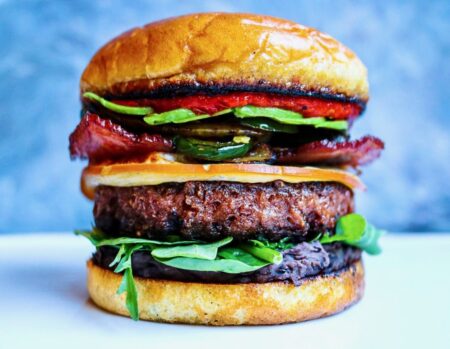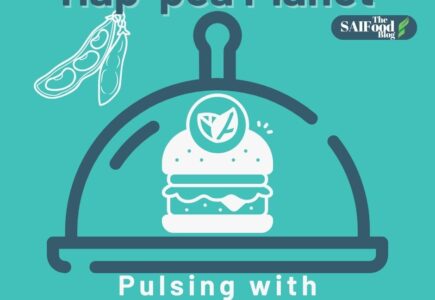The last few years have been a vegetarian’s playground. With the availability of new plant-based options and increased media attention to meatless recipes, it is much easier to reduce meat-based proteins in diets than it once was. Despite having grown up in the vegan restaurant capital of Canada, I am by no means vegetarian. However, plant-based culture is gaining momentum, especially with younger Canadians, and it is worth taking time to consider how agriculture may shift to better accommodate dietary trends.
Shifting is, truly, the most appropriate word to describe the meat-free landscape, as the food industry is heavily impacted by consumer trends. The 2019 popularization of Beyond Beef, a simulated plant-based substitute for burgers, gave another opportunity to Canadians who were perhaps uncertain about meatless diets, to experience available options. By creating a meat substitute that mimics a product with which consumers are already familiar, Beyond Beef was able to circumnavigate the fear of new and promote plant-based alternatives as normal. As a result, individuals are more open to trying various diets, as evidenced by the forecasted 500% meatless meal retail growth by 2026; that openness only continues to increase as diet formulation (i.e. the ability to substitute away from dairy, meat, etc.) becomes easier.
Define: Vegetarian
Vegetarian is occasionally used to group exclusive diets. For example, ‘vegetarian’ should refer to individuals who consume no meat or poultry; however, meat excluders – those who refrain from red meat but may still eat fish and poultry – have also adopted the name. Flexitarian diets reference individuals attempting to reduce their meat consumption without complete refrain, and are also gaining traction in Canada as government bodies vocalize the health necessity of increasing fruit and vegetable consumption. There really is no wrong way to be vegetarian so long as nutritional needs are met since there are numerous dietary variations that exist between omnivore and vegan; think lacto-ovo-vegetarian, raw vegan, or pescatarian.

One major reason for opting out of animal products is the idea that any animal used in agriculture is inherently suffering. That’s a difficult statement to forget, especially when hearing statistics like globally 140,000 chickens are slaughtered every minute. Due to the lack of reporting in the sector, determining the number of fish destined for dinner plates complicates slaughter figures. Individuals who sit on the fence between being disturbed by livestock use and uncertain about making a dietary change may use a “burger vegan” approach to decision making: which option on the shelf causes the least amount of harm (direct or indirect) to the most number of animals? But it is worth remembering that scare tactics or the over-enunciation of animal suffering is based on a rights rather than a welfare perspective. In many ways, the difference is described as philosophical (animals should never suffer) versus scientific (any potential suffering caused should be minimal), respectively.
Environmental Considerations
The experienced harm may go beyond animals and very well be environmental harm. Beyond the risk of habitat harm as a result of agricultural equipment, veganism is frequently used as the solution to climate change and greenhouse gas emission reductions. To support this, one may consider that organic pork production has eight times the climate change impact as oilseed production. With very little environmental difference between vegetarian, pescatarian, and reduced-meat diets, it is easy to make a case for environmental veganism.
Except, veganism doesn’t guarantee environmental improvement. From an aggregate emissions perspective, every litre of soy milk or every two cups of tomatoes has the same impact as a serving of chicken. Such is incomparable. It is unlikely an individual would drink an entire litre of milk in one sitting, but also unlikely that individual’s nutritional trade-off is the same across diets. The involvement of emissions in the meat-reduction discussion is in and of itself also misleading. When basing the decision on protein standing, conventional milk requires less land than the production of beans, and the realization of those environmental benefits is heavily influenced by preference and efficiency. However, even that is an insufficient comparison, as plant- and animal-based proteins are associated with different vitamins and minerals, and therefore generally inadequate substitutes.
Cattle-free Canada
Promoting veganism as a climate change solution unfortunately fails to consider the tradeoffs. If Canada were to adopt a meat-free society, the land previously used for livestock would likely remain vacant, as not every acre is capable of crop production. The country’s climatic status would likely worsen, as the use of productive livestock to mitigate greenhouse gas emissions is no longer an option. Increased use of greenhouses to meet produce demand would curb equipment-related biodiversity loss and improve food consistency, but would also increase the amount of energy required for food production. These are hypothetical; they address neither the growing population and food demands that have doubled vegetable oil consumption (and waste) since the 1960s, nor the high cereal prices expected as a result of environmental events.
Currently, the plant-based market should have priorities beyond climate change, as the scientific basis of that claim is difficult to quantify. However, for exactly that claim, vegetarianism has morphed into a symbol of social status as opposed to lifestyle change. This is exemplified by the gap between individuals claiming to be vegetarian and those who consistently avoid meat products. That may not entirely be the responsibility of consumers, who rely on industry labels that may not adequately trace ingredients to be able to call their product vegan but do anyway. By encouraging the development of the meat-free sector, the voices of those involved in the industry and their consumers’ ethics can be better represented in policy and production. Regardless, the meat-free industry is growing to accommodate a wider range of dietary restrictions. If associated firms are open to plant-based innovations and improving production efficiency, then there is no reason why vegetarian or vegan diets cannot thrive in Canada, or even begin to improve the global environmental problem.

